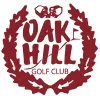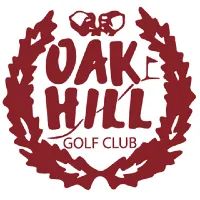Course Description
The idea to build a golf course in the Ridge was born out of golf league activities of the Riegel Paper Corporation in the early 1950s. During those years, the Riegel Ridge Community Foundation, which was owned and operated by the Riegel Paper Corporation, was the focal point for many community activities, especially sporting events. Golf was one of these sports in as much as the Foundation organized and ran Tuesday and Thursday afternoon golf leagues. These leagues were comprised of some 12 teams with about 80 players who were either employees of Riegel Paper Corp. or who lived in the surrounding area. Don Hawkins, Director of the Riegel Community Foundation, Bill Case, Assistant Director and Jim Griffith, Assistant Personnel Director of Riegle Paper Corporation were all directly involved in running the sporting events conducted by the Foundation and were instrumental in developing enthusiasm for golf through the these leagues. As a result of this enthusiasm and other golfing events such as the George Borden Memorial Tournament, the idea of possibly having a golf course built in the Ridge was born.
Several exploratory meetings were held during the early 1950s between the Riegel Community Foundation directors and officials of the Riegel Paper Corp., including John Riegel, President. The initial idea of having Riegel Paper Corp. build a golf course for its employees on property in the Ridge was turned down mainly due to legal problems with government agencies. Mr. Riegel, however, offered the thought that enough property could be made available for a golf course if the employees and members of the community could demonstrate a willingness to generate the funds necessary for the construction and operation of at least a nine-hole golf course. He also expressed the hope that if such a course was constructed in the Ridge area that playing on it would be made available to all the workers at the paper mill as well as the General Manager and Supervisors.
With this information in hand, the Riegel Community Foundation, on Feb. 18, 1957, distributed a "Golf Questionnaire" to the employees of the Riegel Paper Corp. in order to obtain information regarding the general level of interest in golf, and whether it would be likely that a golf course could be successfully run. As a result of this questionnaire, the first Riegel Ridge Golf Course Planning Committee was formed. The committee reported to the Riegel Community Foundation and was assigned the task of investigating ways and means of making the building of a golf course a reality. The committee was comprised of t he following members: Roy Anderson, Art Brand, "Shorty" Friling, Jim Griffith, Virginia Harder, Ernie Harper, Claire Hatch, Carleton Kelley, Josh Krechel, Jack Male, Bill Smith, Ezra Wean, Joe Kinney, Herb Stem, Bill Stem, Bill Case, Jim Galloway and John Youpa. (The membership today still includes some of these original planners.)
The finance section of the planing committee presented several proposals aimed at raising funds for the construction of the golf course. The proposals all incorporated the idea of selling shares or subscriptions to both Riegel Paper Corp. employees and others in the community; generating funds which would be used to build the golf course while also building a membership base. The committee presented a general plan outlining the construction of 18 holes of golf on the Brush-Rounsaville farm tracts, which were owned by the Riegel Paper Corp. The method of financing the project would be to sell 200 certificates at $250 each, raising $50,000. This plan was taken to the Riegel Community Foundation for consideration.
During this same period of time, others on the planning committee had developed detailed information about the construction, operation and maintenance of a golf course. Bill Stem, who had taken the lead concerning the legal aspects of the club, had prepared a proposed Certificate of Incorporation and a set of proposed By-Laws. Joe Kinney and Art Brand had organized a team and a plan for conducting a campaign to raise the necessary funds for construction of at least 9 holes of golf. Ezra Wean, along with Don Newcomb and Paul Rickenbach, had contacted and interviewed 5 golf course architects and had obtained bids for the plans and construction of 9 holes of golf. The golf course architects contacted and interviewed were: Harold Purdy, Horace W. Smith, William F. Gordon, Russel Roberts, Rudy Secton and Edmund Ault. (Although Ed was not selected to design the original course, his son Brian would later be hired by the club to make some improvements to the existing layout.)
All of the architects were unanimous in the opinion that the property (Brush-Rounsaville farm tracts) was admirably suited for a golf course and that at least 9 holes could be constructed for approximately $65,000. At this time Virginia Harder and the Women's Committee began to socialize events to further build enthusiasm for the project, and the Riegel Paper Corp. was asked to deed, lease or somehow make available on a permanent basis, the land necessary to construct the course.
The company was also asked at this point to loan the Riegel Community Foundation $60,000 for the initial construction, with the understanding that this loan would be repaid in 10 years. From initial visits to other existing golf courses in the area (Copper Hill, Green Pond and Harkers Hollow), it was determined that operating expenses would be approximately $40,000 per year. It was thought that the golf course would be run by the Riegel Community Foundation with a special board overseeing the operations.
After all the construction and financing and projects of the mid to late 1960s the club finally settled into a period of normal operations. Thus, the fully operational 18-hole Oak Hill Golf Course, complete with Clubhouse, Pro Shop and Cart Storage buildings was created and nourished into the great golf facility that its members have since enjoyed for almost 40 years.


